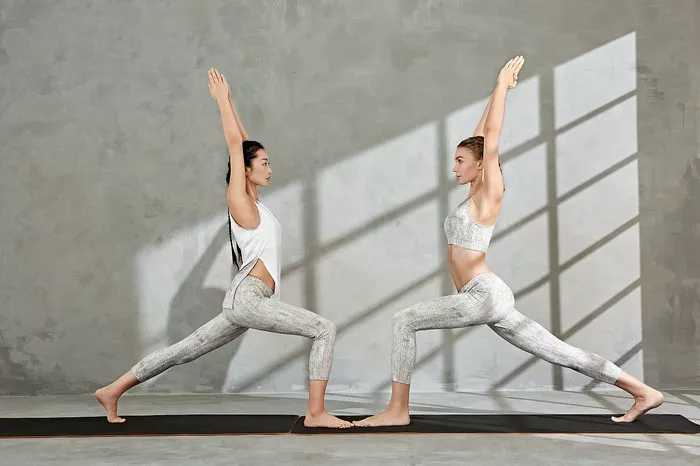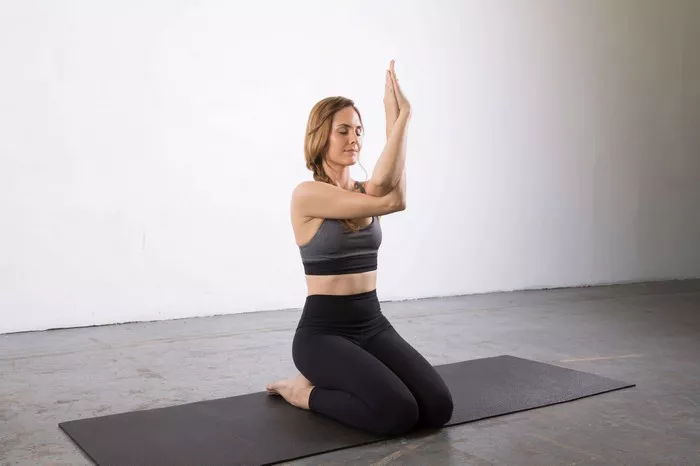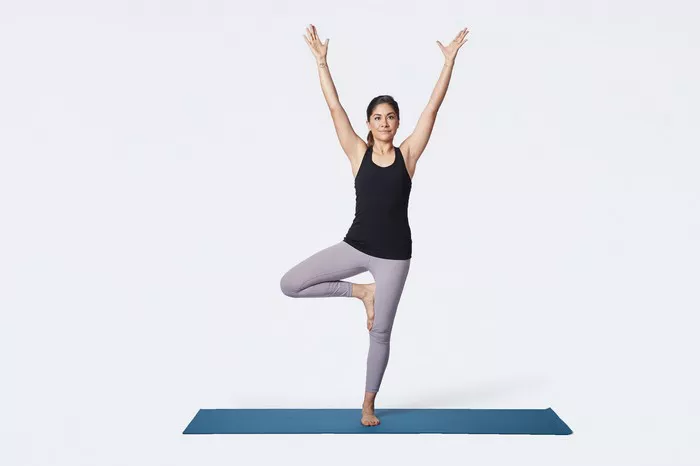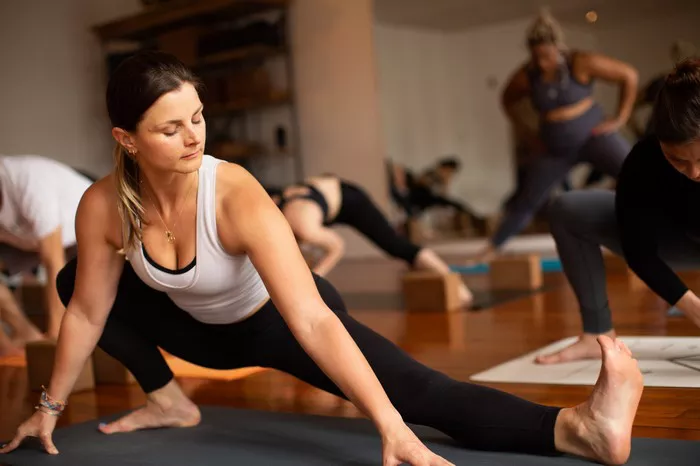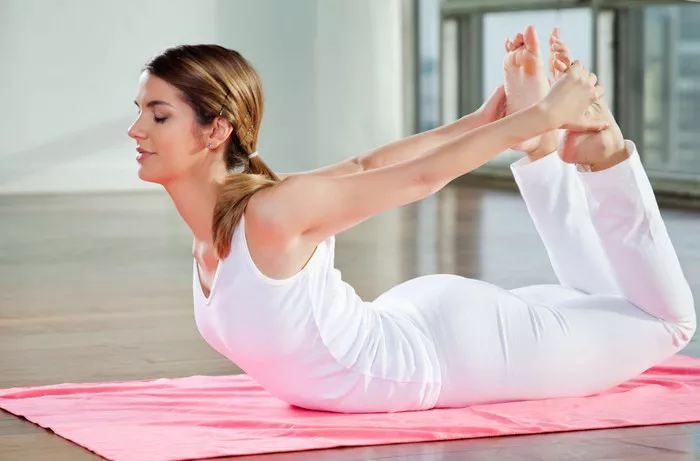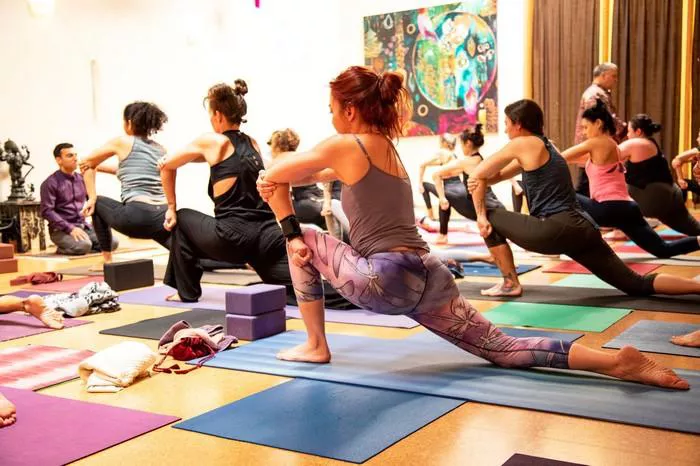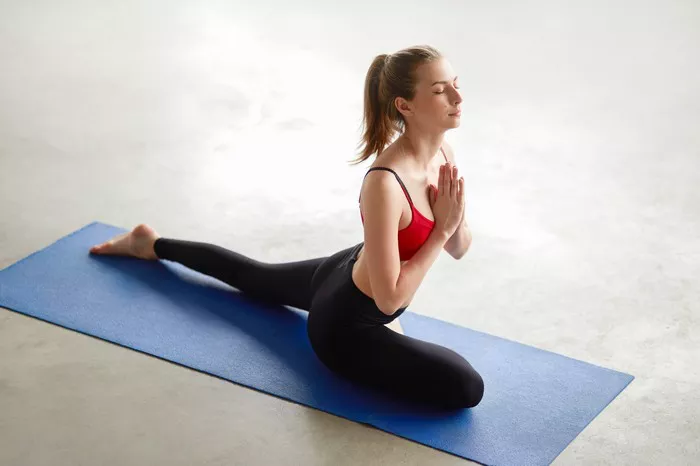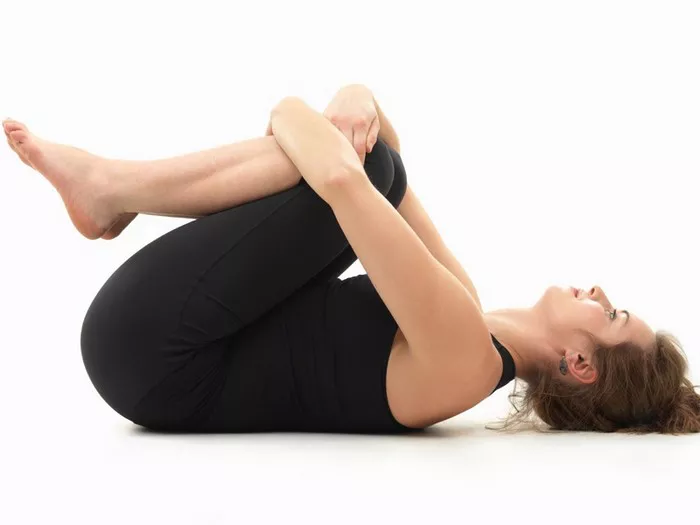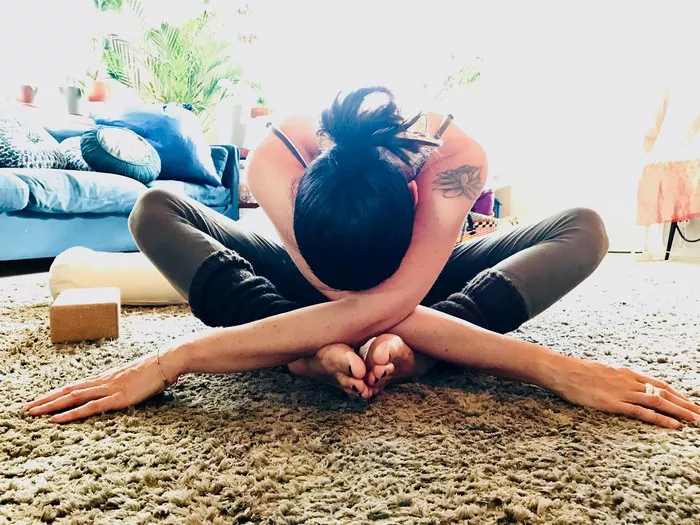Yoga is not just a solitary practice; it can also be a wonderful way to bond with another person. Partner yoga, also known as couple’s yoga, combines traditional yoga poses with the element of cooperation and mutual support. Practicing yoga with a partner can deepen your connection, improve communication, and enhance your overall experience. Here, we explore the 10 coolest yoga poses for two people that will challenge your balance, flexibility, and teamwork.
1. Double Downward Dog
The Double Downward Dog is a fantastic starting point for partner yoga. It helps build trust and communication between partners while offering a deep stretch for the hamstrings, shoulders, and back.
Steps:
- Partner A begins in a traditional Downward Dog pose, forming an inverted V shape with their body.
- Partner B stands facing away from Partner A’s head and places their hands about a foot in front of Partner A’s hands.
- Partner B then lifts one leg at a time and places their feet on Partner A’s lower back or hips, creating a second Downward Dog on top of the first.
Benefits:
- Strengthens the arms, shoulders, and core.
- Enhances flexibility in the hamstrings and calves.
- Improves balance and coordination.
2. Partner Forward Fold
This pose is excellent for deepening the stretch in the hamstrings and lower back while fostering a sense of support and connection.
Steps:
- Both partners stand back-to-back with feet hip-width apart.
- Interlace arms with your partner’s, ensuring a firm grip.
- Simultaneously fold forward from the hips, allowing your head to drop and your back to lengthen.
- Gently pull against each other’s weight to deepen the stretch.
Benefits:
Increases flexibility in the hamstrings and lower back.
Encourages relaxation and trust.
Enhances communication and cooperation.
See Also: 5 Key Side Bend Yoga Poses
3. Seated Forward and Backbend
This pose combines a forward fold with a backbend, providing a comprehensive stretch for both partners.
Steps:
- Sit back-to-back with your partner, legs extended in front of you.
- Partner A folds forward, reaching for their toes.
- Partner B leans back, pressing their back against Partner A’s back, opening their chest and shoulders.
- Hold the pose for several breaths, then switch roles.
Benefits:
- Stretches the hamstrings, spine, and shoulders.
- Promotes balance between forward and backward bending.
- Strengthens the connection and awareness between partners.
4. Twin Trees
The Twin Trees pose is a variation of the traditional Tree pose, offering a fun way to work on balance and stability together.
Steps:
- Stand side by side with your partner, with about a foot of space between you.
- Place your inside arm around each other’s waist for support.
- Shift your weight onto your inside foot.
- Lift your outside foot and place it on the inside of your standing leg, either at the ankle, calf, or thigh, avoiding the knee.
- Bring your outside arm to your heart center or extend it overhead.
- Hold the pose, focusing on balance and breath, then switch sides.
Benefits:
- Improves balance and stability.
- Strengthens the legs and core.
- Enhances focus and concentration.
5. Double Boat Pose
The Double Boat Pose is a great way to engage your core muscles while working together to maintain balance.
Steps:
- Sit facing each other with your knees bent and feet flat on the ground.
- Hold each other’s wrists or hands.
- Lift your feet off the ground, bringing your shins parallel to the floor.
- Slowly straighten your legs, pressing the soles of your feet together.
- Engage your core to keep your spine straight and balanced.
- Hold the pose for several breaths, maintaining eye contact for added connection.
Benefits:
- Strengthens the core, hip flexors, and legs.
- Improves balance and coordination.
- Fosters mutual support and trust.
6. Partner Warrior III
Warrior III is a challenging balance pose that, when practiced with a partner, can help improve alignment and stability.
Steps:
- Stand facing your partner with about a foot of space between you.
- Reach forward and hold each other’s forearms or wrists.
- Shift your weight onto your right foot and lift your left leg straight back, keeping your hips square.
- Lean forward with a straight back, creating a T-shape with your body.
- Hold the pose, then switch legs and repeat.
Benefits:
- Strengthens the legs, core, and back.
- Improves balance and posture.
- Enhances coordination and cooperation.
7. Partner Camel Pose
This pose combines a deep backbend with mutual support, offering a profound stretch for the chest, shoulders, and front body.
Steps:
- Kneel facing each other, with your knees hip-width apart.
- Reach out and hold each other’s forearms.
- Slowly lean back, pressing your hips forward and lifting your chest.
- Allow your head to drop back gently, opening your throat and chest.
- Hold the pose for several breaths, supporting each other’s weight.
Benefits:
- Stretches the chest, shoulders, and abdomen.
- Improves flexibility in the spine.
- Enhances trust and mutual support.
8. Double Plank Pose
The Double Plank Pose is a powerful way to build strength in the core, arms, and shoulders while working together to maintain alignment.
Steps:
- Partner A begins in a traditional plank pose, with wrists directly under shoulders and a straight line from head to heels.
- Partner B stands at Partner A’s feet, facing away from them.
- Partner B places their hands on Partner A’s ankles and steps back into their own plank position, stacking their feet on Partner A’s shoulders or upper back.
- Hold the pose, engaging your core and maintaining a straight line.
Benefits:
- Strengthens the core, arms, and shoulders.
- Improves balance and stability.
- Builds mutual trust and teamwork.
9. Partner Boat Pose
A variation of the Double Boat Pose, this pose further challenges your core strength and balance while fostering a sense of playfulness.
Steps:
- Sit facing each other with knees bent and feet flat on the ground.
- Hold each other’s wrists or hands.
- Lift your feet off the ground and press the soles of your feet together.
- Straighten your legs, creating a V-shape with your bodies.
- Hold the pose, engaging your core and maintaining eye contact.
Benefits:
- Strengthens the core, hip flexors, and legs.
- Improves balance and coordination.
- Encourages playfulness and connection.
10. Flying Bow Pose
Flying Bow Pose is an advanced partner yoga pose that combines strength, balance, and trust. It requires good communication and coordination.
Steps:
- Partner A lies on their back with knees bent and feet on the ground.
- Partner B stands at Partner A’s head, facing away from them.
- Partner A grabs Partner B’s ankles, and Partner B grabs Partner A’s ankles.
- Partner A presses their feet into Partner B’s lower back, lifting them into the air.
- Partner B lifts their chest and legs into a bow shape, balancing on Partner A’s feet.
- Hold the pose, communicating and adjusting as needed.
Benefits:
- Stretches the chest, shoulders, and quadriceps.
- Strengthens the core and back muscles.
- Builds trust and enhances communication.
Conclusion
Partner yoga is a wonderful way to enhance your yoga practice while building a deeper connection with another person. These 10 coolest yoga poses for two people offer a range of benefits, from improving balance and flexibility to strengthening muscles and fostering trust. Whether you’re practicing with a friend, a loved one, or a yoga buddy, these poses will challenge you to work together, communicate effectively, and support each other through every movement. So grab a partner and start exploring the joys of partner yoga today!
Related topics:

